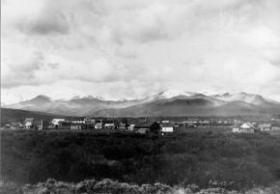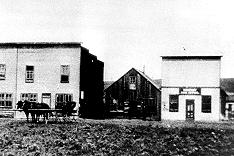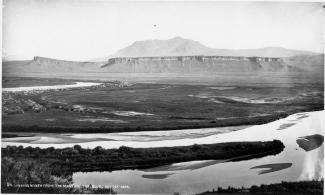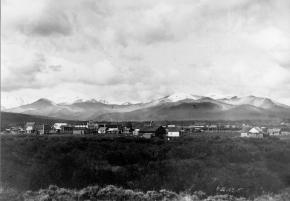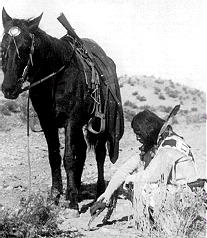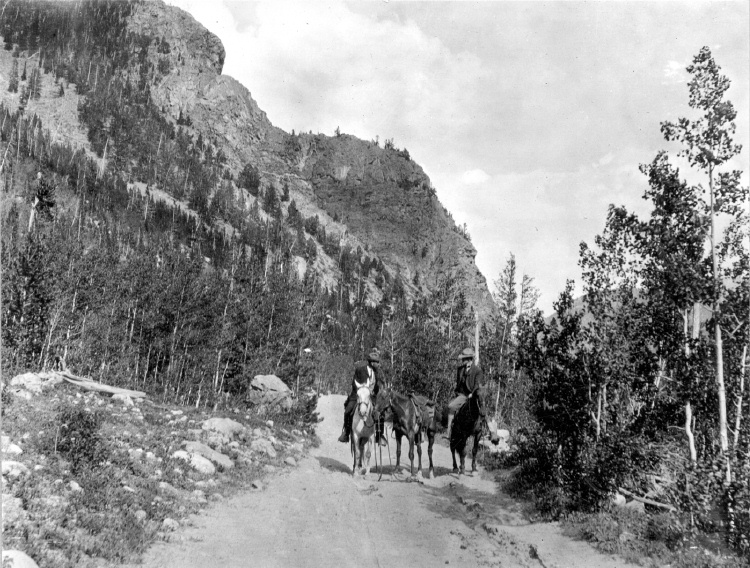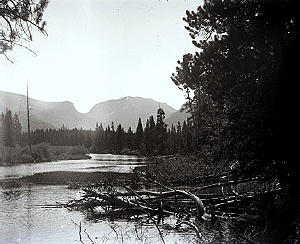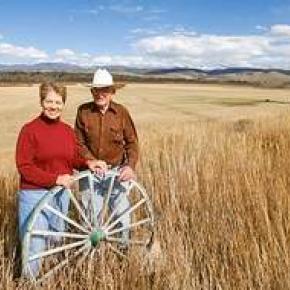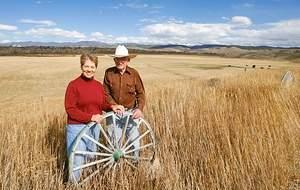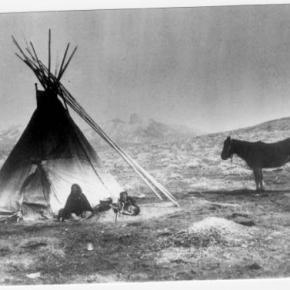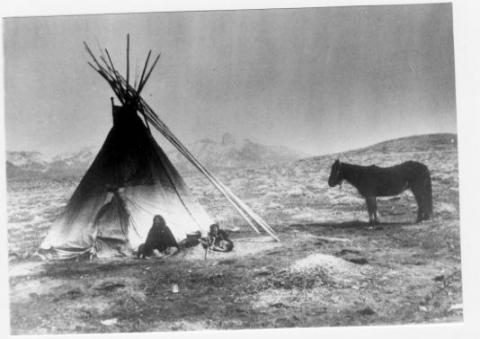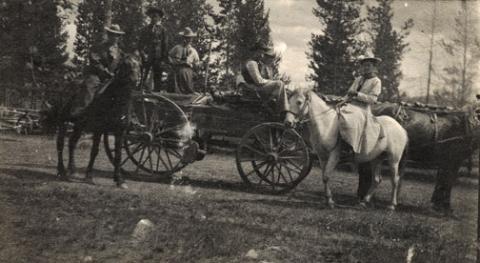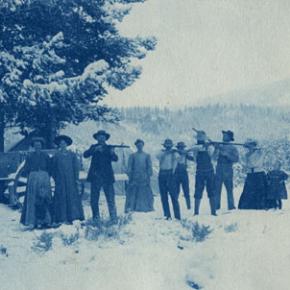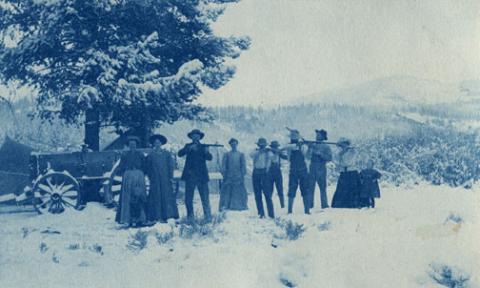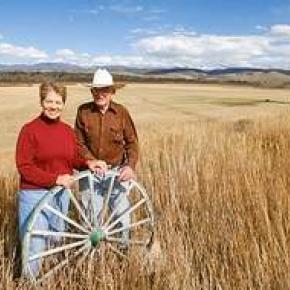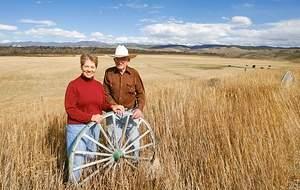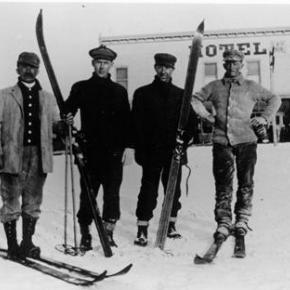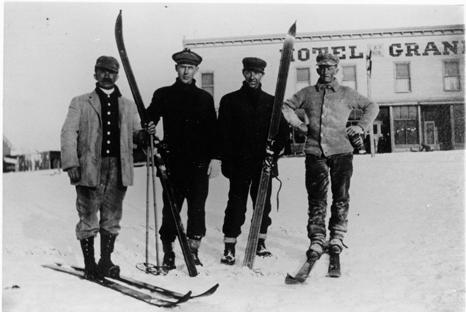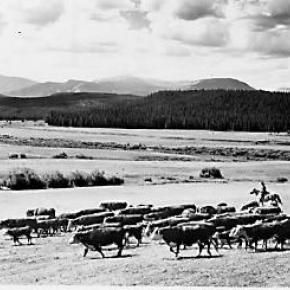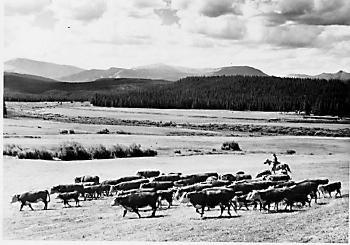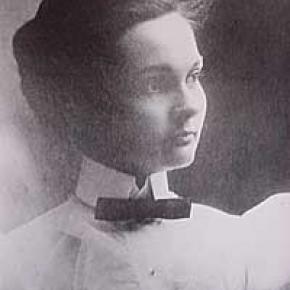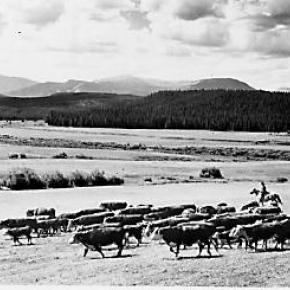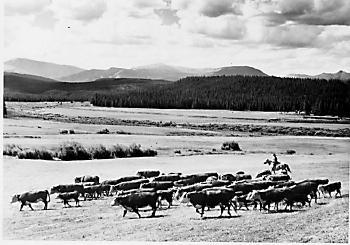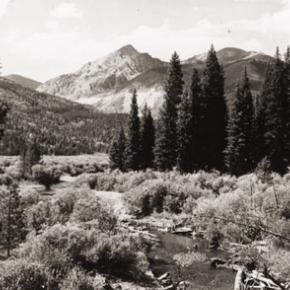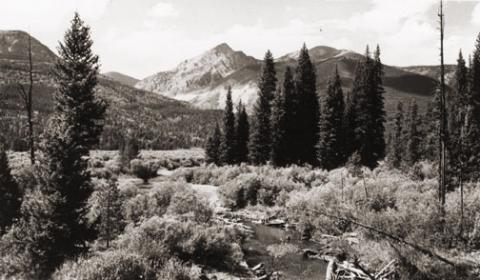The Territorial legislature defined the boundaries and county seats for the West Slope in 1861. Geographic knowledge of the Colorado mountains was somewhat limited at that time. North Park (a name now synonymous with Jackson County) was an Indian hunting ground and little was known about it.
A boom started with the discovery of gold and silver at Teller City in 1879. North Park was considered to be part of Grand County, and now there was property to assess and tax. The Grand County road tax in North Park for 1881 applied only to males between the ages of 21 and 45. They had to either pay $3 in cash or do two day's work on the roads. John Mills, a Teller City resident who acted as an attorney for mine owners, served as a Grand County commissioner and was one of the commissioners killed in the July 4, 1883 gun battle at Grand Lake.
As ranches became established and more mineral deposits were discovered, the Larimer County commissioners began to speculate that the "Snowy Range" that defined the western boundary of Larimer County was the Park Range on the west side of North Park rather than the Medicine Bow Range. This opinion soon degenerated into a dispute between Grand and Larimer counties, ultimately ending up in court. In 1886 the Colorado Supreme Court ruled that North Park was part of Larimer County.
A trip to the county seat in Fort Collins was a considerable undertaking. If everything ran on schedule it was possible for travelers to leave Walden on the morning stage, catch a train from Laramie to Cheyenne, another train from Cheyenne to Greeley, still another from Greeley to Fort Collins, and arrive at the county seat before closing hours the following day. The fares amounted to a significant expense. It was probably more common for a North Parker to travel to Fort Collins in his wagon, take care of business, and come home with a wagonload of provisions. The trip by wagon took three to four days each way.
As the population of North Park grew, so did the desire to split from Larimer County. In 1908 the Loveland newspaper stated that Larimer County was too big and advocated a new county with Loveland as the county seat. The Walden newspaper agreed that the county was too big but felt the wrong division line had been picked, pointing out that "A Loveland man can get to the county seat in three hours anytime, but it takes a North Park man three days most of the time."
Ranchers resisted early efforts to set off the area west of the Medicine Bow Range into a county of its own as they carried the largest part of the tax burden and felt their taxes would increase if a new county was established. But by 1908 there was general agreement within the Park that it was time for court and administrative offices to be more conveniently located.
The total valuation assessed in 1908 of North Park property by Larimer County was $771,776, which generated $16,979 of revenue. The salaries of some of the paid officers of the new county was estimated as follows:
Assessor $800
County School Superintendent $800
Water Commissioner, 2 districts $1000
County Commissioners $1000
Even adding in salaries for the sheriff and county clerk it appeared quite likely that the new county could be operated efficiently without a tax increase and the proposal to create "North Park County" had nearly unanimous support from North Parkers. The bill passed the legislature easily in April 1909, with a name change to Jackson, and was quickly signed into law on May 5 by Governor Shafroth.
While North Parkers were eager to sever their legal ties to Larimer County in 1909, they clearly weren't ready to give up the pleasures of offered by a nip of the bottle. Like most frontier areas, North Park had a significant number of single men who liked to occasionally get together and enjoy a few drinks with their friends. Walden was the center of socialization. According to an 1899 newspaper article, Walden residents worried about the "toughs" who came to town to "drink barbed-wire bitters and then shoot up the place."
In addition, local married men sometimes frequented the bars when they could have been spending more time at home helping out with domestic chores. As a result, a strong temperance movement soon divided the community. One of the two local newspapers, the North Park Union, endorsed the temperance movement in early 1902 and soon found itself the target of a boycott by both advertisers and subscribers. Although the editor declared it a "boycott of no great magnitude", the paper had a new owner/editor within a month. The issue of whether Walden should be wet or dry was on the 1902 ballot. By a very decisive majority, voters decided Walden would continue to be wet.
Just before the 1906 election, the Walden newspaper criticized the local Republican Party bosses for providing a lot of free whiskey in every North Park precinct on election day, and urged North Parkers not to sell their vote for a drink. The temperance movement enjoyed its first victory when it combined forces with the local church and convinced the businessmen of Walden to close their stores on Sundays. The closing did not stand in high favor with ranchers. "When a man can't buy axle grease for his wagon when it runs dry and something else for himself when he runs dry, it is time to call a halt," they declared. Quite a number of the ranchers started going through to Laramie for their provisions, and the Sunday closing rule was abandoned six weeks after it was implemented.
When news reached Walden in early 1909 that the bill creating Jackson County had cleared the legislature, the newspaper reported that the town was moved to the point of a merry celebration. The brass band marched, guns were fired, and at daybreak "the women, as becomes their sex, were among the few who were sober." A few weeks later news that the Governor had signed the bill was cause for another celebration. The newspaper reported that, "the air about town clouded up and filled with burnt powder and raucous vocalizations. The festivities continued in the evening with flying anvils propelled by stick powder . . ." The first hundred years of Jackson County had commenced.









